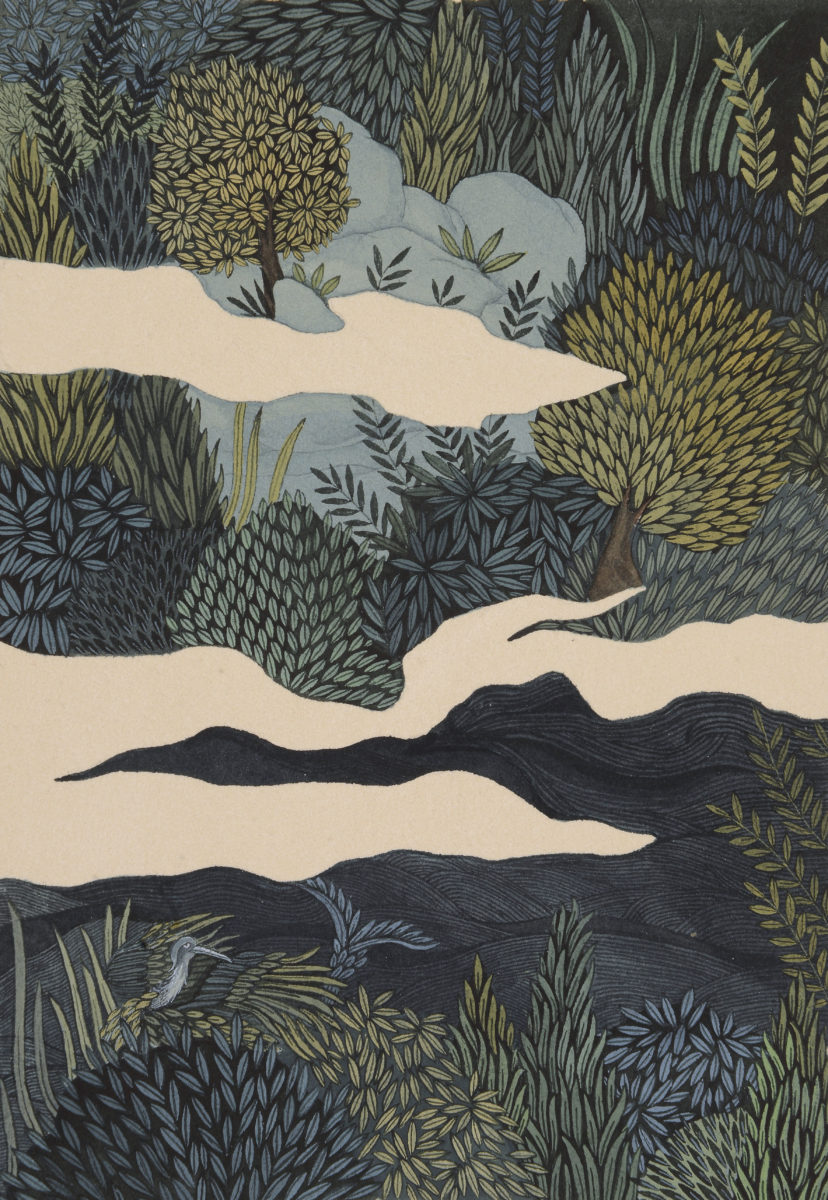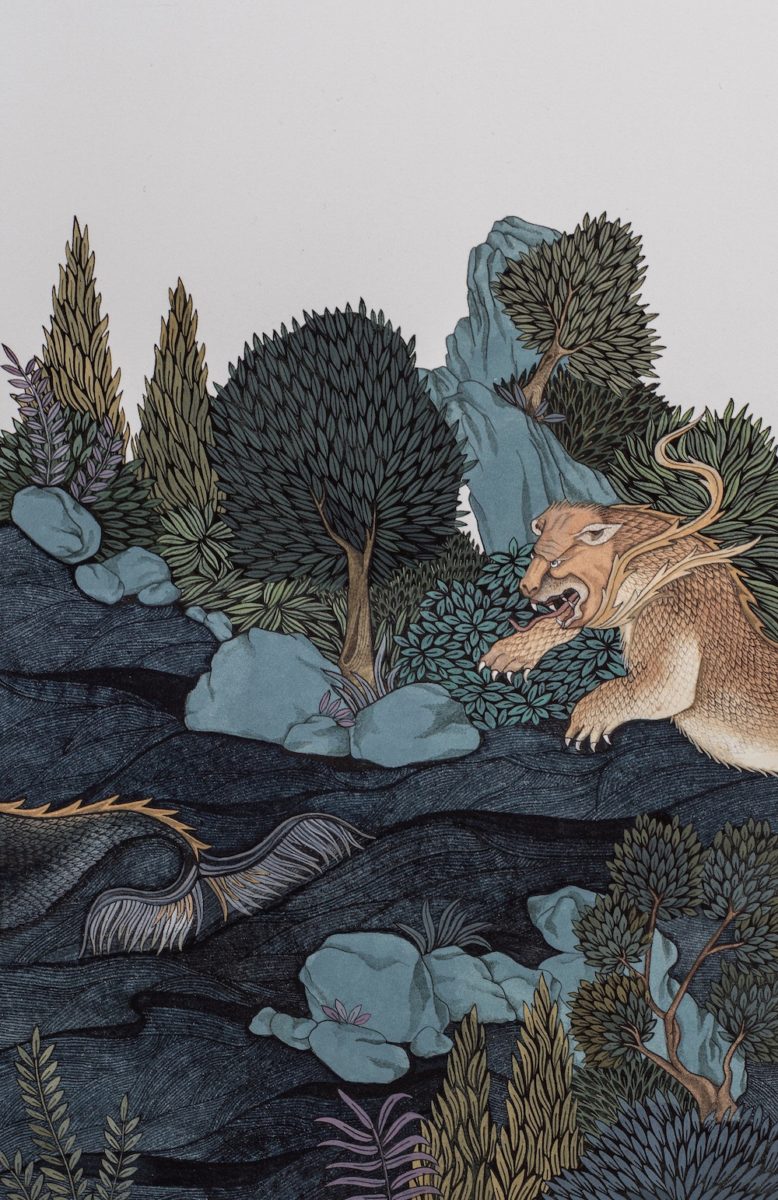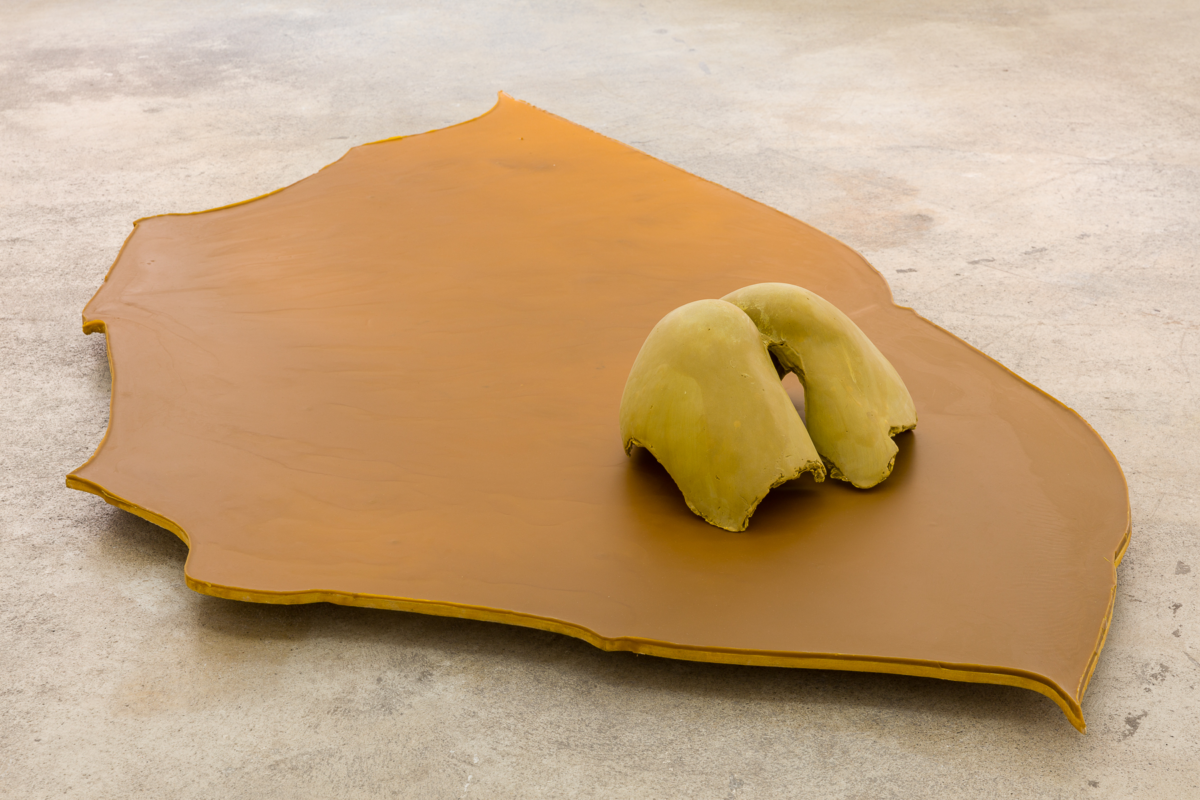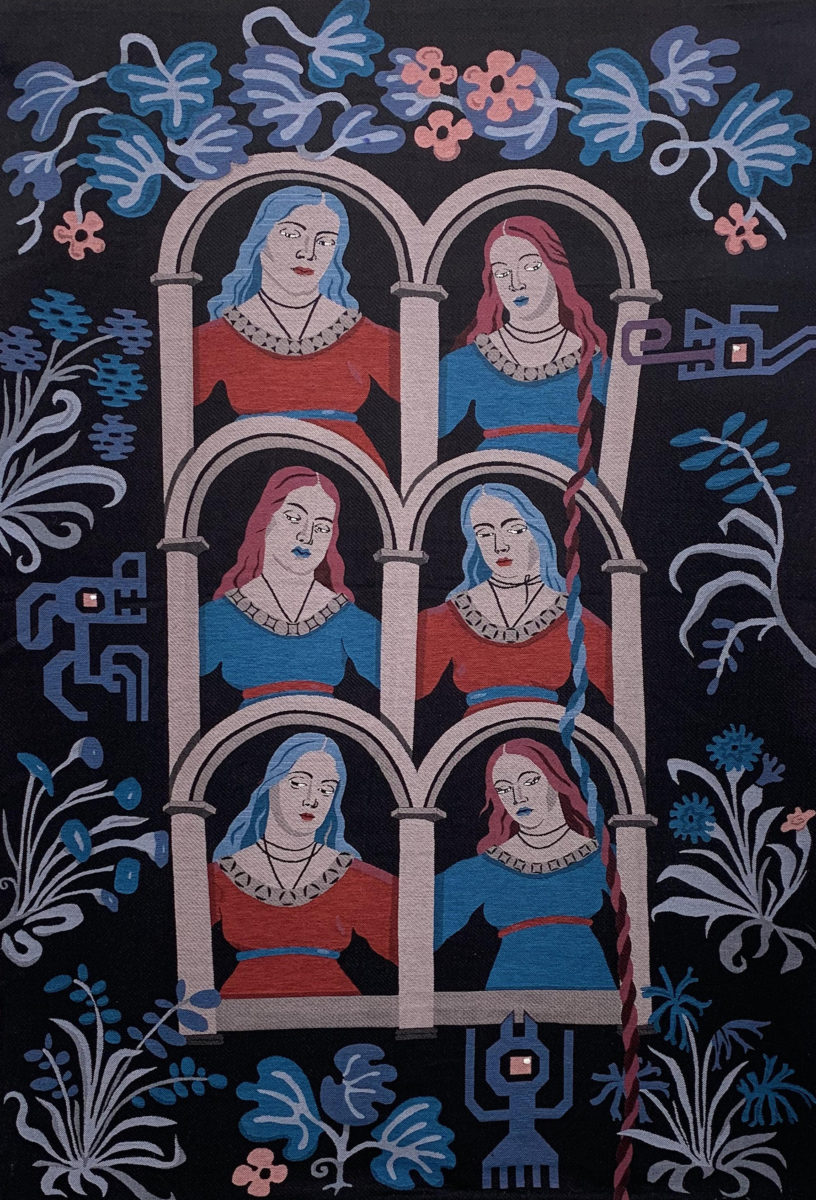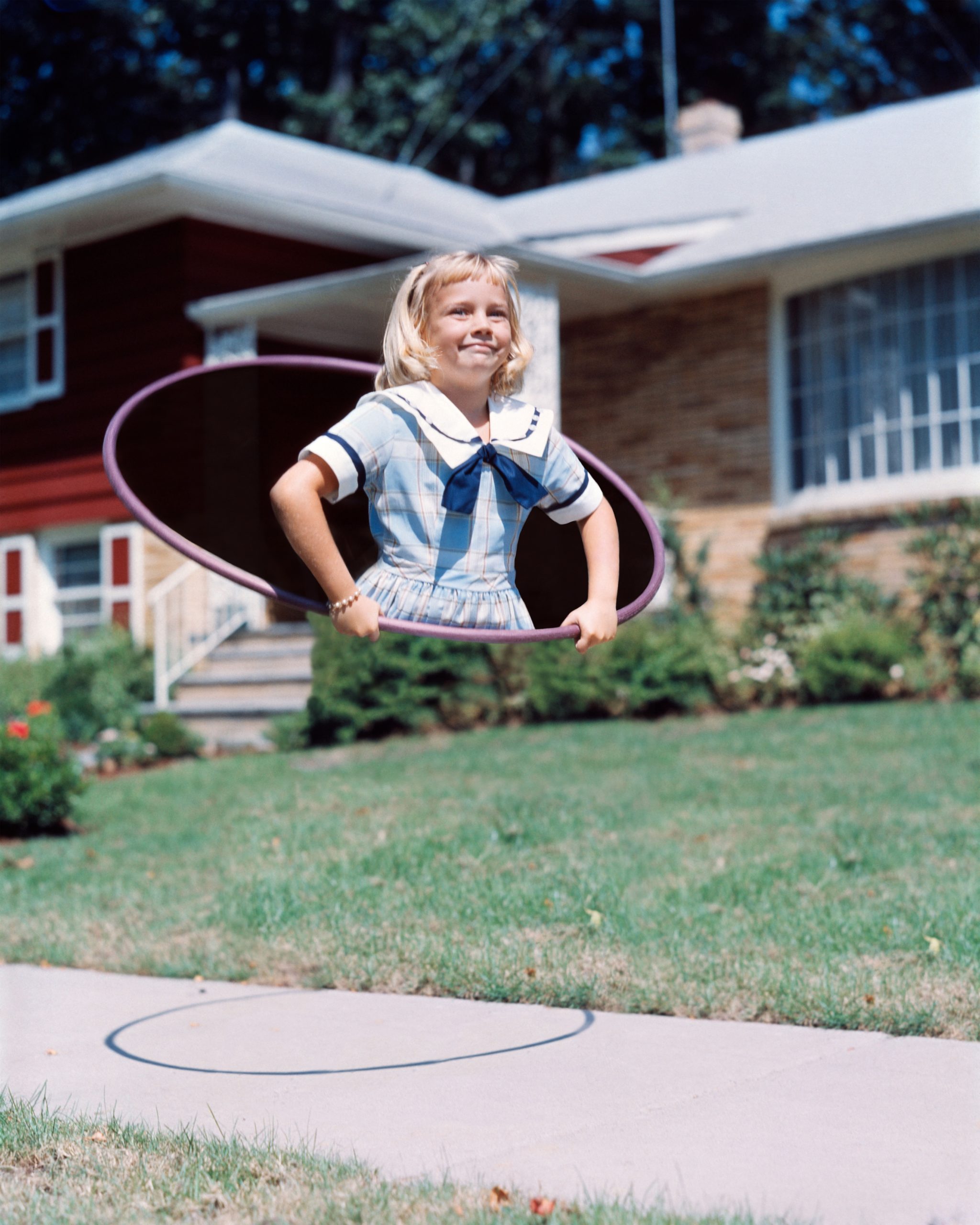
Photography: Weronika Gęsicka
A box of old family photographs can play strange tricks on the mind, conjuring false memories and surprising reinventions of moments that have since been frozen in time. Polish-born Weronika Gęsicka explores memory and its mechanisms in her photographic work, making use of image archives and found material taken from the internet, police records and old press photography. In the series Traces, she manipulates family scenes, holiday souvenirs and snaps of everyday life, suspending them somewhere between truth and fiction. Recontextualised and subtly transformed, they blur into a new reality. Gęsicka’s work is currently on display at The Outside Art Project, a new permanent outdoor gallery space in London’s Kings Cross, as part of a collaborative exhibition with The Photographers’ Gallery. (Louise Benson)
- Maha Ahmed, From Emptiness to the Song Within IV, 2019 (left); Silence Your Demons, 2020 (right). Courtesy the artist and Kristin Hjellegjerde Gallery
Painting: Maha Ahmed
Maha Ahmed’s meticulously created miniature works are often devoid of human activity, depicting rocky, tree-lined landscapes and small islands in deep blues and greens, dotted occasionally with animal forms. “My work investigates the feeling of isolation when presented with an unfamiliar situation or environment,” the artist says. A Place That Cannot Be, her new solo show at Kristin Hjellegjerde in London, places Ahmed’s long-running style within the context of the pandemic, a time in which people have experienced new depths of isolation. “Before the pandemic, this felt like a personal experience to me, but now everyone is suddenly aware of their bodies in relation to their surroundings, which I find very interesting,” she says. Mythology plays a key role in work, which often features hybrid creatures and landscapes that are not quite of this world. (Emily Steer)

Embroidery: Nicole Chui
Messy, brash and disruptive, Nicole Chui’s hand-embroidered images inspire anarchic visual languages. Defiantly straddling the boundary between art and design, Chui’s creations have been commissioned by the likes of NTS Radio, Nike and Gal-dem. She is also no stranger to exhibiting, and was named one of the Evening Standard’s future faces under 25. She has shown work everywhere from the Arcola Theatre to NOW Gallery, while counting Converse and The Hepworth Wakefield amongst her workshopping gigs. Chui is passionate about platforming under-represented communities, and by harnessing the power of what is traditionally considered “women’s craft”, she upends stereotypes by utilising thread as a tool for disruption. You can witness Chui’s work for yourself at the Secret 7” exhibition in September and Rumah Festival at Rich Mix, which celebrates work from the Asian diasporas. (Anoushka Khandwala)

Performance / Installation: Abbas Zahedi
Abbas Zahedi is an interdisciplinary artist based in London. He is known for his installations, writing and performances, addressing embodiment, neo-diaspora identities and the ways in which personal and communal histories interrelate. Zahedi has previously exhibited at Spike Island, the Royal Academy of Arts, Tate Britain and Whitechapel Gallery. As a postgraduate artist in residence at South London Gallery, Zahedi presented How to Make a How from a Why? earlier this year. It was a symbol-laden installation which connected his Iranian heritage with the physical infrastructure of the gallery, drawing on motifs of liquidity and exits. Constantly engaging with practitioners, activists and reformers from a variety of different fields, Zahedi uses art to develop a wider societal analysis, which has its roots in his work with migrant and marginalised communities. (Ravi Ghosh)
- Simnikiwe Buhlungu, Vitamin See, 2017. Video still, 3min 56sec
Video / Installation: Simnikiwe Buhlungu
Simnikiwe Buhlungu’s work spans text, installation and video, and often explores ideas around how knowledge is produced and by whom. She is also interested in the relationship between “real” lived experience and language, and the spaces left between what is said, meant and left unspoken. I discovered her work through the new Wysing Arts Centre Broadcasts site, an interactive digital platform showcasing new commissions, live events and a research thread in which artists are invited to compile their current “interstates and obsessions”. Johannesburg-born, currently Amsterdam-based Buhlungu’s selections include a piano tutorial, a book of woodworking tricks and tips, and the fact that lightning is hotter than the sun. Her Showroom mural commission in London, titled Notes to Self (Intimate 1), is on show until October, and uses interactive sound elements, text and textiles that work together to examine “strolling” as a form of knowledge production. (Emily Gosling)
Derrick Ofosu Boateng
Derrick Ofosu Boateng’s photo collages are highly saturated, their colour as vibrant as if squeezed directly out of a paint tube. The Ghana-based creative cites the iPhone as his primary tool, due to its ease of use, paired with Photoshop for its accessibility. Wielding the power of Instagram to showcase his work, Boateng rose from obscurity in 2017, once he started posting images taken on his father’s phone, and now boasts almost 40,000 followers. Having shown at Copeland Gallery in South London last year, as part of a group show from HAART (House of African Art), 2020 has seen Boateng rack up even more commissions, features and interviews. Infusing the images with his love for Ghanaian culture, Boateng utilises everyday symbols that border on the mundane, and edits them into the sublime. (Anoushka Khandwala)
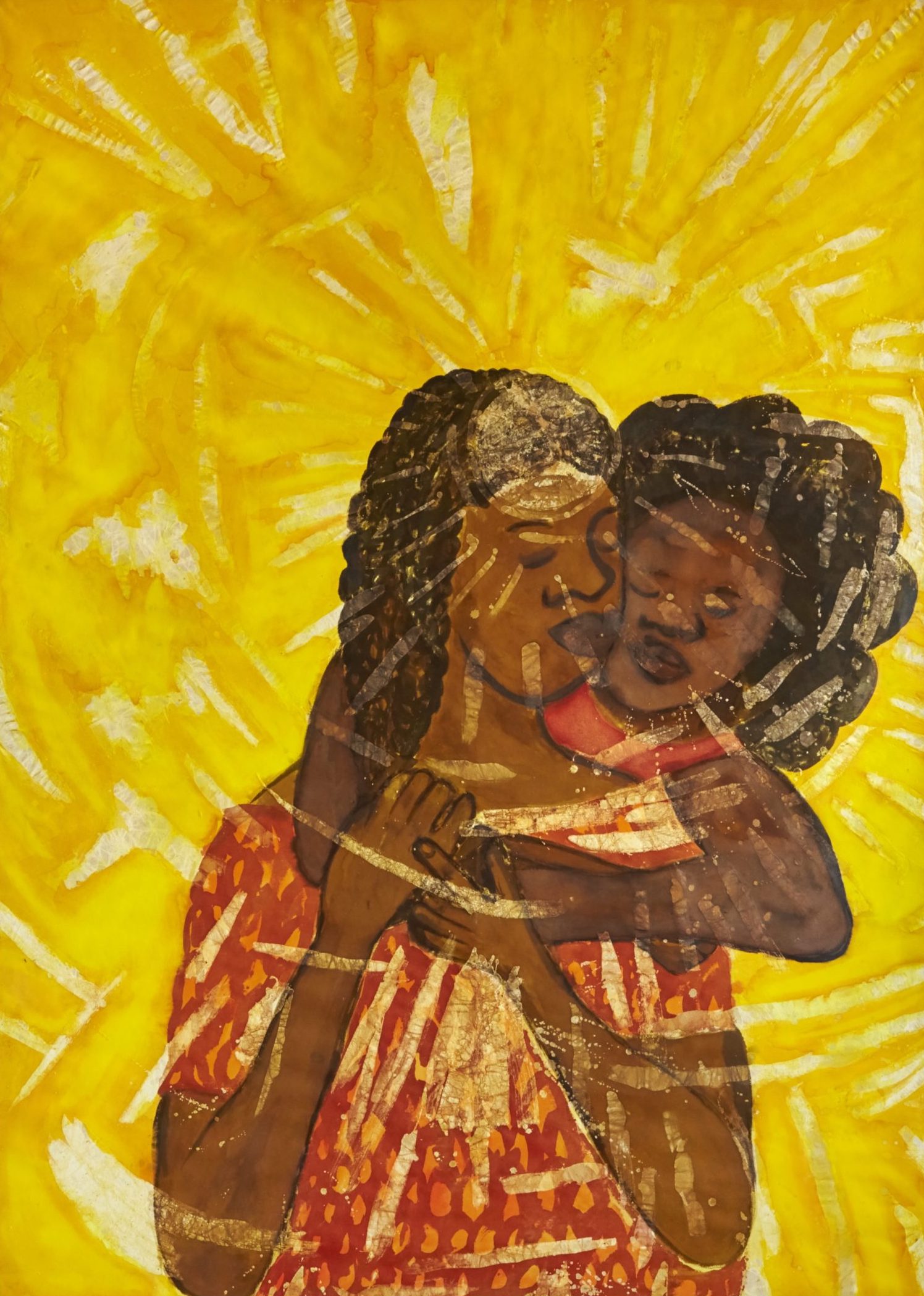
Sola Olulode
Sola Olulode is a Nigerian-British painter from South London. A graduate of Camberwell and Brighton, Olulode was shortlisted for the Evening Standard Art Prize in 2018, and went on to present her first solo show at Von Goetz. Her paintings are often dominated by a block-coloured background; the deep cobalts, indigos or mustard yellows allow her sketch-like figures to hang above the canvas. The predominantly Black subjects are captured in tactile and caring exchanges, from tending hair, to sitting across from one another in a bathtub; they are varied and individuated, but always youthful and animated. Often using her own photographs as inspiration for her practice, Olulode uses wax, oil bar and impasto to retain the social textures of everyday life while experimenting with form and presence. (Ravi Ghosh)
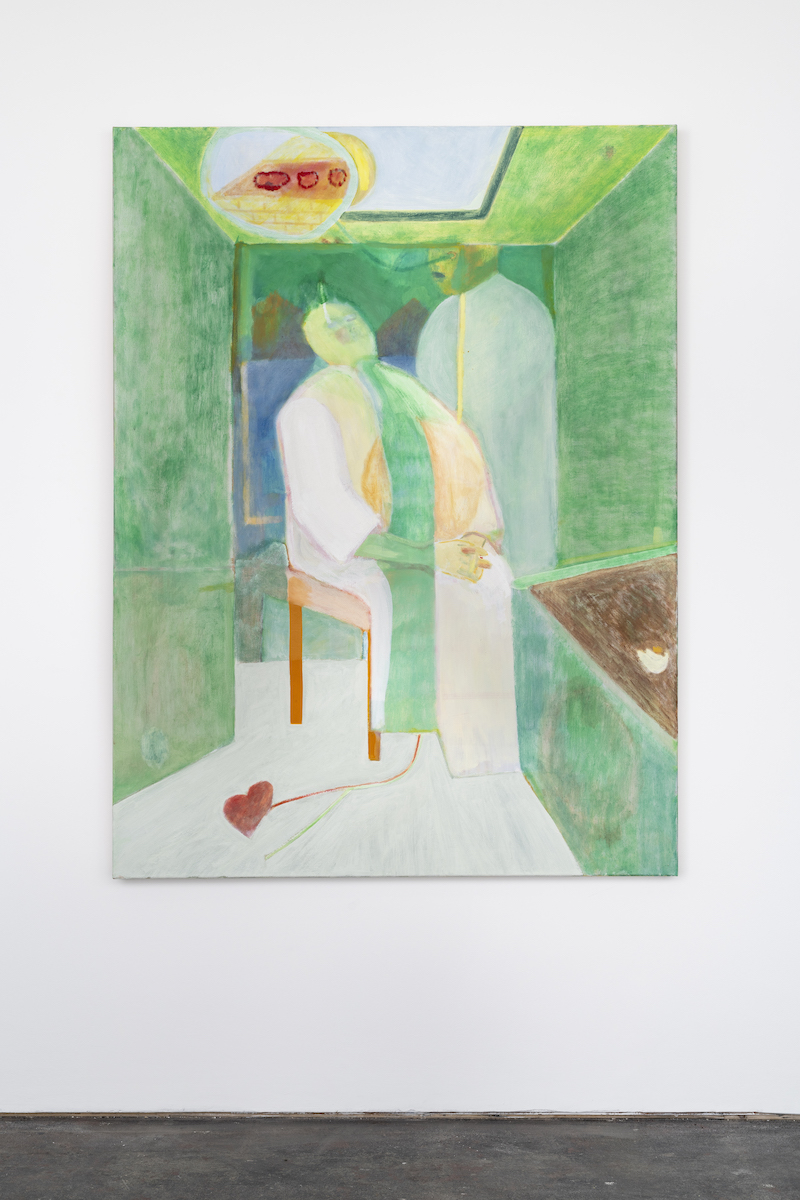
Painting: Gabriella Boyd
Gabriella Boyd’s imagery eludes succinct interpretation, and that is entirely the point. The Glasgow-born artist has always been far more interested in evoking a sense or emotion than a record of a particular scene. As she said in an Elephant interview in 2017: “For me painting isn’t about the representation or the likeness, it’s about the spirit. Otherwise, what’s the point?” At a time when mental wellbeing has been a paramount concern in the wake of global lockdowns, Boyd’s paintings tap into complex elements of the inner psyche that are often difficult to articulate. In her latest series, which remains on show until 8 August at Seventeen Gallery, there is a sense of enclosure and dread, despite the vibrant palette and subtle brushworks. Narrative impressions slip and slide, inviting viewers to draw their own conclusions about what exactly it is that they are seeing. (Holly Black)
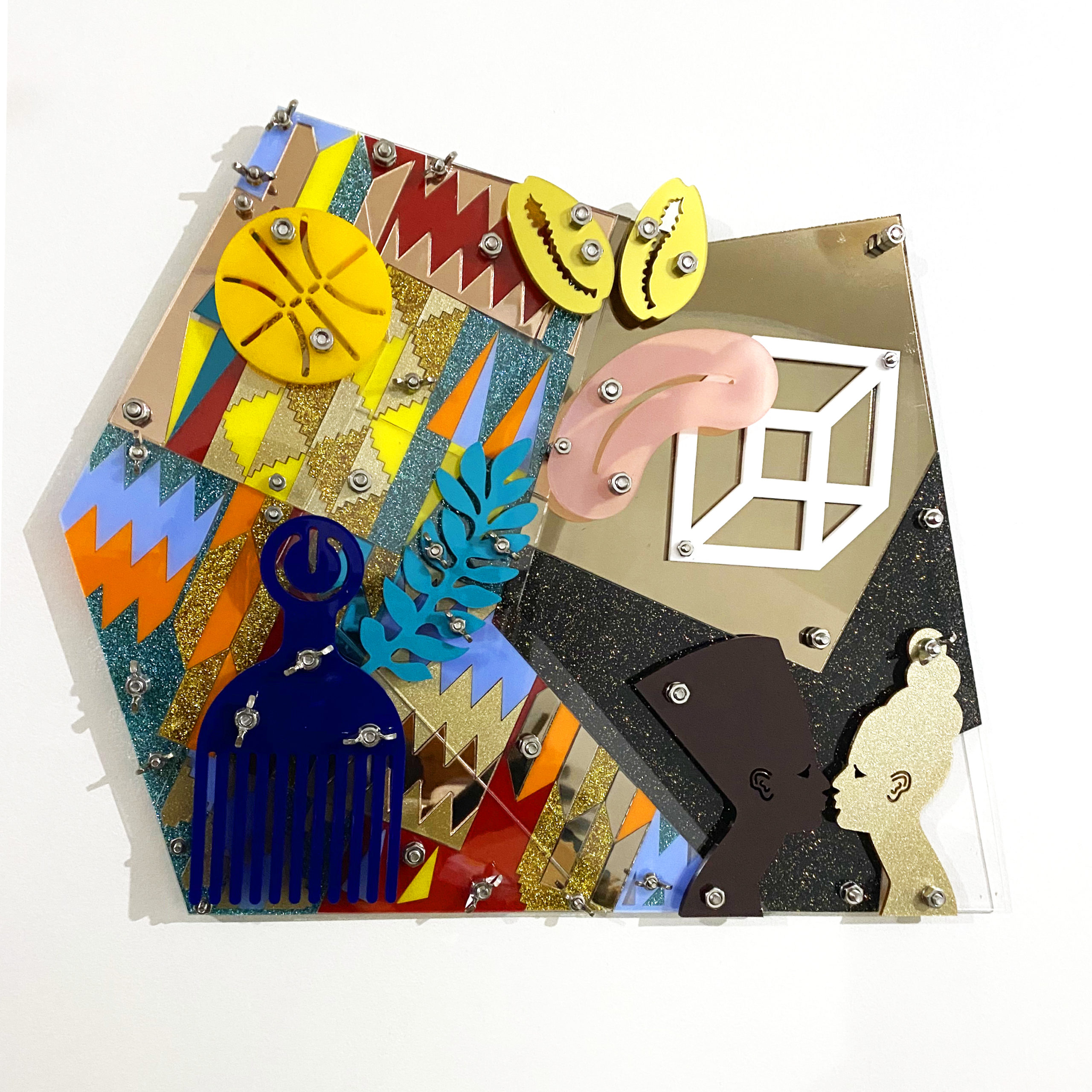
Sculpture / Performance: Damien Davis
Damien Davis was born in Crowly, LA, and now lives and works in New York City. His multimedia pieces span abstraction, wall-based sculpture and performance. His work is currently being celebrated in Gay Guerrilla, a group show of “Queer abstraction” works which M Charlene Stevens (founder of the show’s organisers, Arcade Project Curatoria) describes as building on the premise of activist and gender-themed work born in the early 1970s by investigating “the myriad of new divergent conversations which have stemmed from lesbian, transgender, queer, and queer artists of colour embracing the fluid portal of abstraction”. (Emily Gosling)
- Jala Wahid, Born From and Buried in Baba Gurgur, 2018. Courtesy Sophie Tappeiner, Vienna. Photo: Kunst-Dokumentation.com
Sculpture: Jala Wahid
The Kurdish identity of London-based Jala Wahid is central to her sensitive, often tactile work, through which she explores the politics that have shaped a stateless people, history and iconography. Kurdish symbols, such as the sun rays of the national flag, make appearances in her imagery, while music, text and film create a multi-sensorial experience. Sculpture is used as an emotive mode of suggestion, such as the sleek lower bodies of women draped in folds of cloth that appear almost damp to the touch. Materials including steel, gelatine, sugar and oil make appearances in Wahid’s work, and embody the tension between the natural and the manmade, and the human and the industrial, which infuses her interrogation of national identity and the self. Her work can currently be seen in the inaugural exhibition at Niru Ratnam Gallery in London. (Louise Benson)
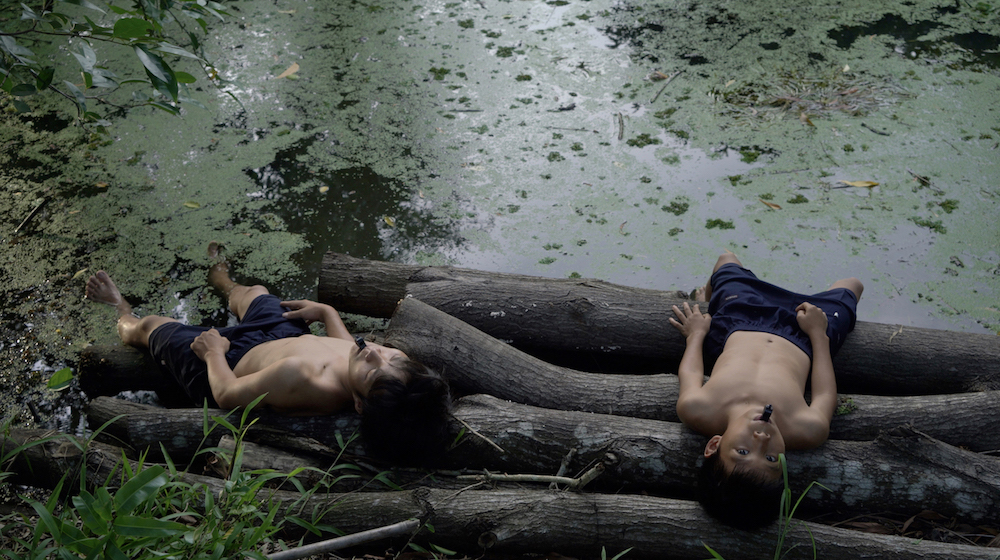
Filmmaking / Painting: Thao Nguyen Phan
Next month, Chisenhale Gallery in London reopens with the first UK institutional solo show of Thao Nguyen Phan. The Vietnamese multimedia artist originally trained as a painter, and now combines video, painting and installation in a practice which draws from “literature, philosophy and daily life”. Her expansive work Becoming Alluvium journeys along the Mekong River, and is structured around a three-part cycle of destruction, reincarnation and renewal. It brings together twenty-first-century concerns—ecological sustainability and industrialisation—with mythology, digging into the “cultural, agricultural and economic significance of the river”. In advance of the show opening, you can now watch her 2019 three-channel video work Mute Grain on Chisenhale’s website, which addresses the 1945 famine in Vietnam, and again combines elements of brutal reality and folklore. (Emily Steer)
- Oona Brangam Snell, Ladies (left); Fire Guy (right). Courtesy the artist
Textiles: Oona Brangam-Snell
Informed by her day job at the influential textile company Maharam, where she is a senior designer, New York-based artist Oona Brangam-Snell conceives incredible tapestries that marry the allegorical symbolism of this age-old medium with contemporary iconography. She is inspired by the complex histories surrounding textile production, from medieval wall hangings to theatre curtains, considering not only the individual elements of a pattern or scene, but the possibilities of repetition and replication. Her surreal and often comical compositions are aided by a deft understanding of the material processes involved in tapestry construction, which result in an incredible mix of textures, complex half-tones and vibrant blocks of colour. (Holly Black)
